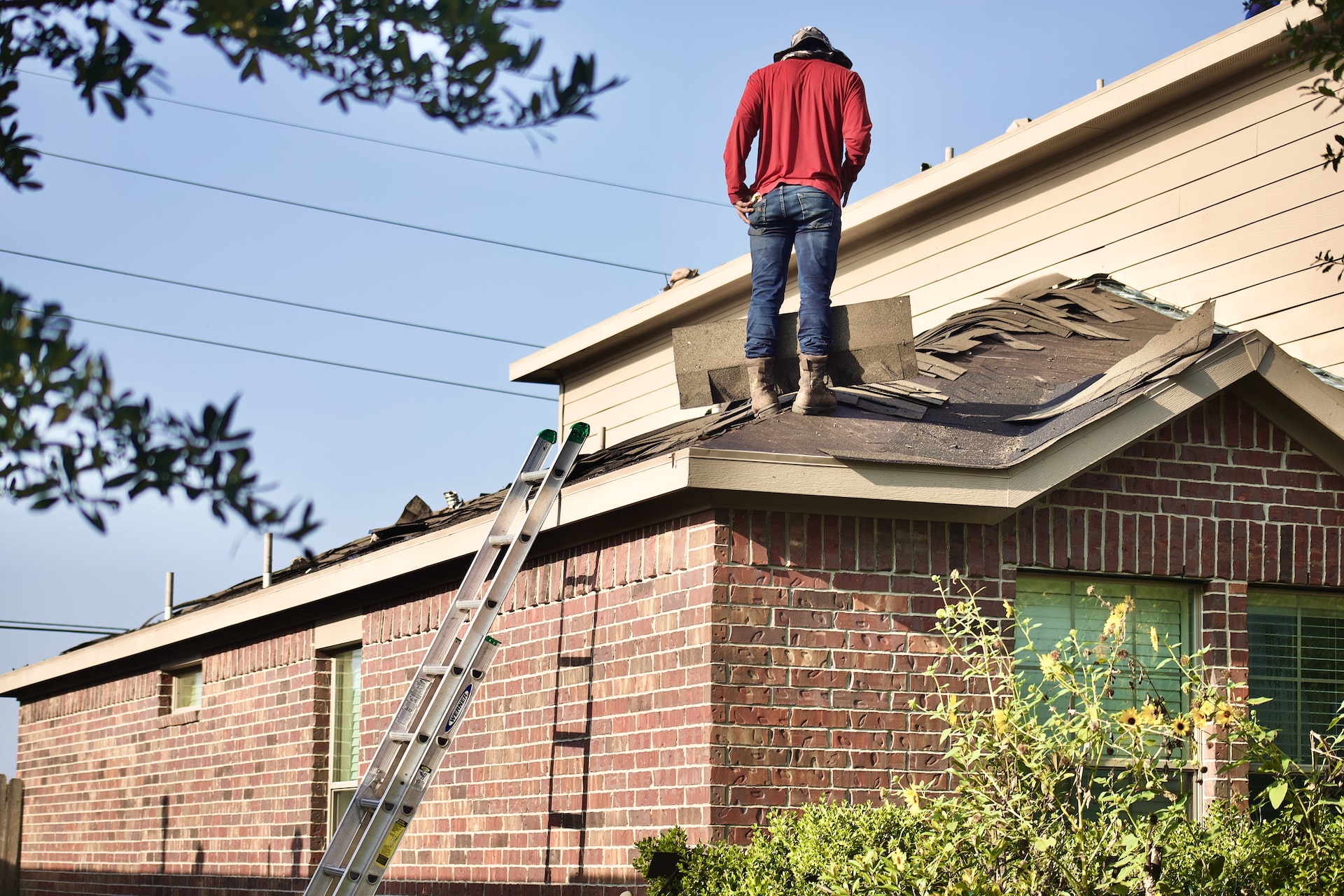Your roof is one of the major systems in your house. It protects your family and the rest of your home from weather damage. As spring approaches, there are a few routine maintenance tips you should follow to keep your home protected.
Although your realtor might have recommended a home warranty, these policies typically don’t cover your roof. If they do, that coverage usually only lasts the first year of home ownership. Most of the time, your roof is covered by home insurance. These routine maintenance tips can prevent major damage so you don’t have to file a claim. Once you file a claim, there’s a chance your premiums might go up.
These spring roofing tips are especially important for roofs that have just gone through a snowy winter. Ice dams and foreign objects can cause damage that’s hard to see during winter. You need to know exactly what’s going on with your roof before the April showers, hail storms, straight-line winds, and thunderstorms arrive.
Prepare your roof for spring
Before you reach out to a local roofing contractor, there are a few things on your roof that you can look for yourself. Get out a ladder and put on some protective eyewear and gloves to check out your roof’s condition.
Clear out debris and foreign objects
Leaves, branches, and acorns can cause a lot of damage to your roof. If you live in an area with heavy snowstorms, you might not have even heard the branch from your neighbor’s tree land on the roof. Ice and decaying shingles can cause holes in your roof and leaks in your ceilings and walls.
Taking an hour or two to get leaves out of the gutters is a quick, easy way to keep water flowing away from your roof. Removing twigs, branches, and other debris protects your shingles from scratches and wear.
Larger branches and debris can be difficult and even dangerous to remove on your own. In this case, contact a professional roofer or contractor for help.
Look out for damage
Once you’ve removed any debris, look for loose shingles, gaps, and holes. While larger leaks will cause noticeable wet spots in your ceilings or walls, smaller gaps can be hard to catch without looking for them. Fixing loose or missing shingles now could prevent paying for large repairs later.
If you’re not prepared to fix the damage yourself, make a note so you can relay the information to a roofer or contractor. These problems should be fixed promptly, but you don’t have to climb up on the roof yourself right away.
Are there ice dams on your roof?
Ice dams occur when snow and ice thaw during the day and run down the roof, only to freeze at night. Spring is the most dangerous time for ice dams since the weather is warming up, but freezes are still common at night. As the snow melts, look at your roof for areas where large icicles are forming.
Ice dams tend to form around chimneys. If you have a roof with a steeper slope or large gables, you may be dealing with multiple ice dam spots each season. Snow starts melting quickly in these spots only to freeze overnight into a formidable ice dam.
If ice dams are a frequent problem on your property, there are a few additional steps you can take. Buy a roof rake to help remove snow from problematic areas throughout the winter. If the snow isn’t there to melt, it won’t form an ice dam on your roof in the spring.
Consider installing heat cables or heat tape to parts of the roof where ice dams are common. This way, you can keep the water melting and flowing off the roof rather than freezing and causing water damage in your attic.
Spring roof maintenance
Once the weather is warm enough to do some work outside, there are a few routine spring roof maintenance tasks you should take care of. Following these five roof maintenance tips each spring will keep your roof in great shape for a longer period.
Clean your gutters
You might’ve gotten rid of larger items in the gutters during your brief roof inspection. It’s important to make sure the gutters are completely clear. Dirt, leaves, and pine cones piled up in the gutters stop water from reaching the drains. You might end up with standing water on your rooftop, which could lead to wood rot and mold.
Water damage can be extremely costly, but the good news is it’s relatively easy to prevent with a little elbow grease. Cleaning your gutters each spring (and fall) also helps prevent ice dams next winter.
Trim and prune your trees
Overhanging branches pose the biggest threat to your roof. Trees drop plenty of leaves each season, leading to debris buildup. While shade is nice in the summer, it provides the perfect atmosphere for mold and algae growth.
There’s also the danger of a branch falling onto your roof during a storm. From large punctures to ruined shingles, tree branches can cause plenty of damage. Trim your trees away from your home, and make sure that there aren’t any branches touching your roof. They might scratch the roof shingles.
If the tree in question belongs to your neighbor, talk to them about trimming the problematic branch. In some cases, you can trim a tree branch without your neighbor’s permission if the branch is on your property. Check your local guidelines before you proceed with any major tree trimming or removal projects.
Check on the insulation
Take a look at your attic to ensure it’s properly ventilated and insulated. If there aren’t any major cold spots on your roof, you’ll be less likely to encounter ice dams. Checking your insulation is also a good way to find small, undetected leaks. If the insulation is damp or moldy, there’s likely a leak in the roof somewhere.
Making sure your insulation is in good shape also reduces heat loss and increases energy efficiency. How can you check your insulation without going into your walls or ceiling? A simple touch test can give you an idea of how well your roof insulation is working. If you touch your ceiling and it’s warm and dry, and the exterior of your roof is cold to the touch, then your roof insulation is doing its job.
Make roof repairs promptly
If you find anything on your roof that’s missing, broken, worn out, or damaged, get it repaired immediately. Your roof is one of the most important parts of your home, so if you aren’t comfortable making repairs, reach out to a roofing company or local contractor.
Fix loose shingles, damage in the soffits, and leaks before more ice and snow melts. Spending time and money will keep water from getting into your home. Your real estate home warranty might only cover roof damage for one year after you move into your home. If you do have roof coverage, you’ll need to act quickly.
Schedule a roof inspection
While you can look at your own roof from the ground or a ladder, a roof inspection is a great option for homeowners. A professional roofing contractor can see and access the higher points of your roof. They’ll know which nooks and crannies to check, and they’ll know exactly what damage to look out for.
Once the inspection is complete, it doesn’t hurt to get quotes from other roofers before scheduling repairs. Don’t wait too long before hiring someone, though. If you have a roof leak, you must act quickly to stop water from getting into your house.
Following these spring roofing tips will keep your roof in great shape for years. Whether you do an inspection or hire a local roofer, keeping up with routine maintenance each spring season is a great way to prevent large repairs and expenses.
If you uncover some damage, hire a local handyman or contractor to fix small links, broken shingles, or problems with the gutter. They can also help you avoid ice dams, dangerous tree branches, and clogged gutters. Along with spring cleaning, spring roof maintenance prevents problems and helps your home stay snug and cozy all year.




